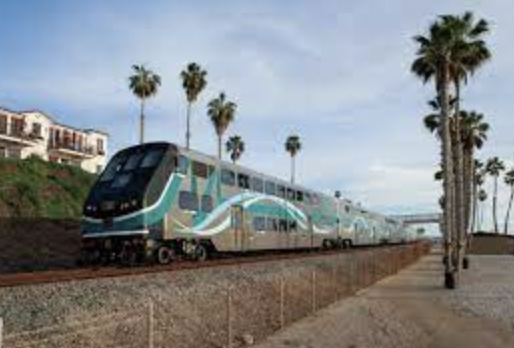Written By: Aaron Cuellar, Staff Writer
REVOLUTIONARY: An overview of what Metrolink’s SCORE project is, how it will affect SoCal, and why you should care.
The Olympic games have long been regarded as one of the most important sporting events in the world, and in 2028, they will be held in Los Angeles. That being said, current infrastructure is already beyond its limits, and will be crippled by the millions that are sure to arrive from around the world for this event. Los Angeles traffic is notoriously bad, and this massive increase in tourism would only make it worse. Thankfully, Metrolink is aware of these problems and working to address them, even now.
Most people probably forget about the agency’s existence. As of 2022, their trains are extremely infrequent, slow, and do not go to the places that people want to visit. One can be forgiven for this due to the low quality of service attributed to the factors above. They are the quintessential commuter rail network; useful for getting to work in downtown LA, and going back out into the suburbs after the end of a shift, and almost nothing else. Weekend commuters, recreational travelers, and anyone trying to go in an off-peak direction (The direction of travel where demand is lowest, for example, LA to Riverside early in the morning on a Monday. Due to this lack of demand, most if not all trains will run in the peak direction, that is, the direction of travel with the highest demand. In this example of an early Monday morning, the peak direction would be from Riverside and other suburbs into LA.) are left to fend for themselves and figure out a different route to their destination.
All that being said, there is hope for a brighter future for the much maligned rail operator. Metrolink has a massive system-wide improvement plan known as the Southern California Optimized Rail Expansion (SCORE) project. Through a variety of capital improvements, a plethora of benefits will be achieved by SCORE. The most obvious among them will be massive service quality improvements. Frequency will be drastically increased, especially on the corridor between Los Angeles and Burbank, where during peak demand periods service will be as frequent as eight trains per direction per hour. Even here in faraway Riverside, once the project is complete, we will see a train every half hour in both directions on the 91/Perris Valley line (Connecting Riverside to LA and Perris. Transfers available to local busses, Amtrak Surflinner and long distance trains, via Metrolink to Oxnard, Lancaster, via LA Metro to LAX, Long Beach, Manhattan Beach, Santa Monica, Inglewood, Hollywood, Norwalk, Pasadena, Azusa) as well as on the Inland Empire-Orange County line (Connecting Riverside to San Bernardino, Orange County, and the city of Oceanside. Transfers available to local buses, Amtrak Surfliner, via NCTD to Escondido, San Diego, US/Mexico Border). Note that the Riverside weekday commuter line is currently not slated for any increases in service. With upgrades to signaling, trackage, grade separations and automation, trains will be able to reach higher speeds as well. Metrolink’s current rolling stock is rated for a maximum possible speed of 125 miles per hour. One can expect slightly slower speeds during revenue service, likely in the range of 115 to 120 miles per hour.
Technical improvements aside, the economic and environmental benefits are also extremely compelling. SoCal’s traffic has garnered global notoriety for being soul-crushingly awful. California as a state outperforms Texas, Florida, New York, Ohio and Georgia in terms of vehicle miles traveled. According to these statistics, we have one of the worst traffic problems in the country, a near-ceaseless pileup on every highway in the state. SCORE is projected to eliminate 3.4 billion vehicle miles traveled (over the course of the projected project lifetime, 2023 to 2078), greatly alleviating the dire state of our roadways. For the environmentally conscious, getting people out of cars and onto Metrolink trains post-SCORE will reduce greenhouse gas emissions by an estimated 51.7 billion metric tons of carbon dioxide and carbon dioxide equivalent emissions (over the course of the projected project lifetime). The project is also predicted to directly generate $18,879,400,000 for the local economies over the course of its eight year construction process. Thousands of new jobs will be created by the project directly and indirectly, and an incalculable number of induced jobs will be created after the project’s completion. Many of these will be in low income or disadvantaged communities.
Metrolink’s SCORE project is slated for completion in 2028, before the Los Angeles Olympic Games. For further information, visit Metrolink’s webpage or the federal California State Rail Plan, which will be published on Caltrans’ web page sometime in early 2023. Both are linked below.
Metrolink on SCORE: https://metrolinktrains.com/score
Caltrans on the California State Rail Plan: https://dot.ca.gov/programs/rail-and-mass-transportation/2022-california-state-rail-plan

